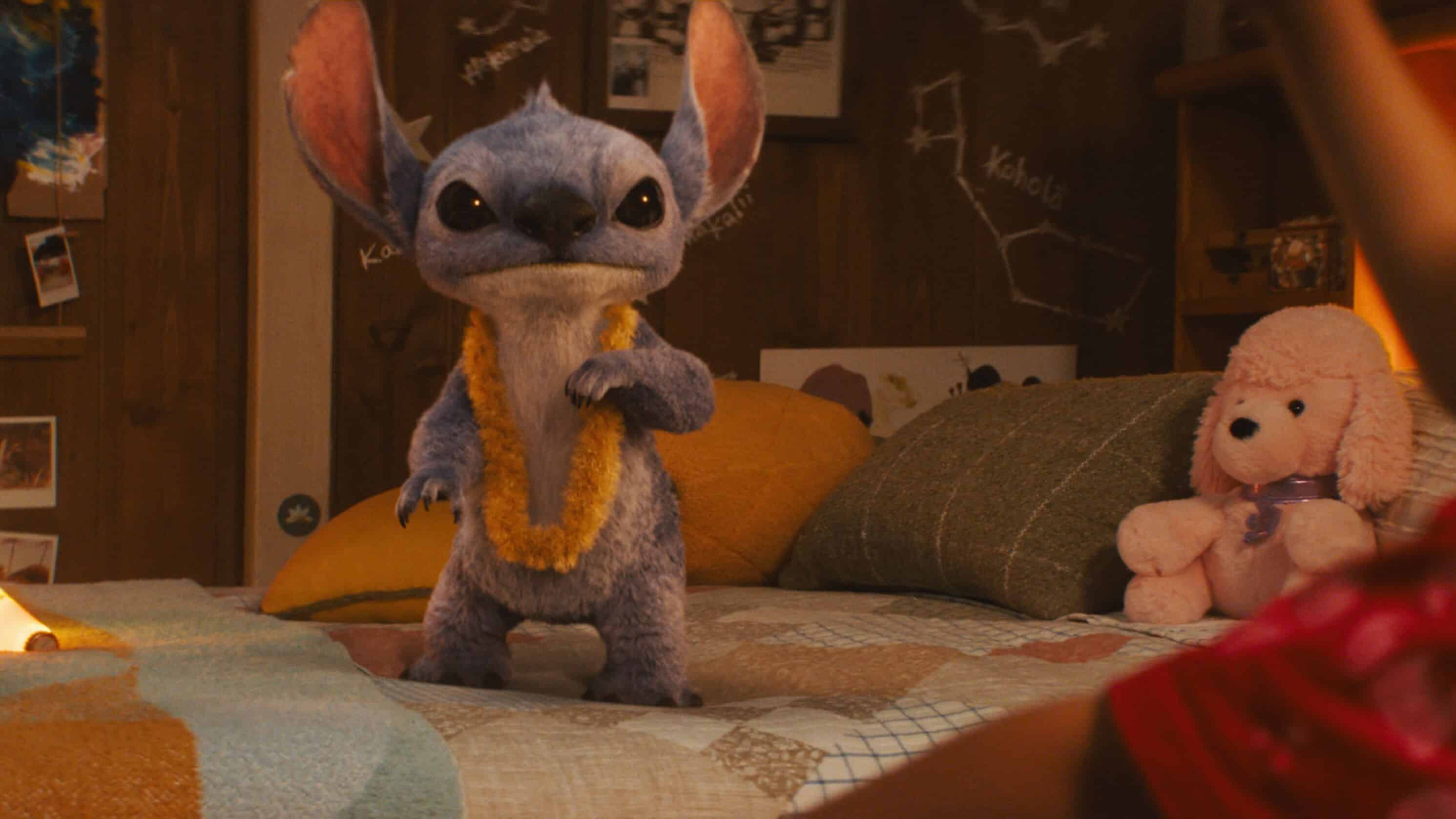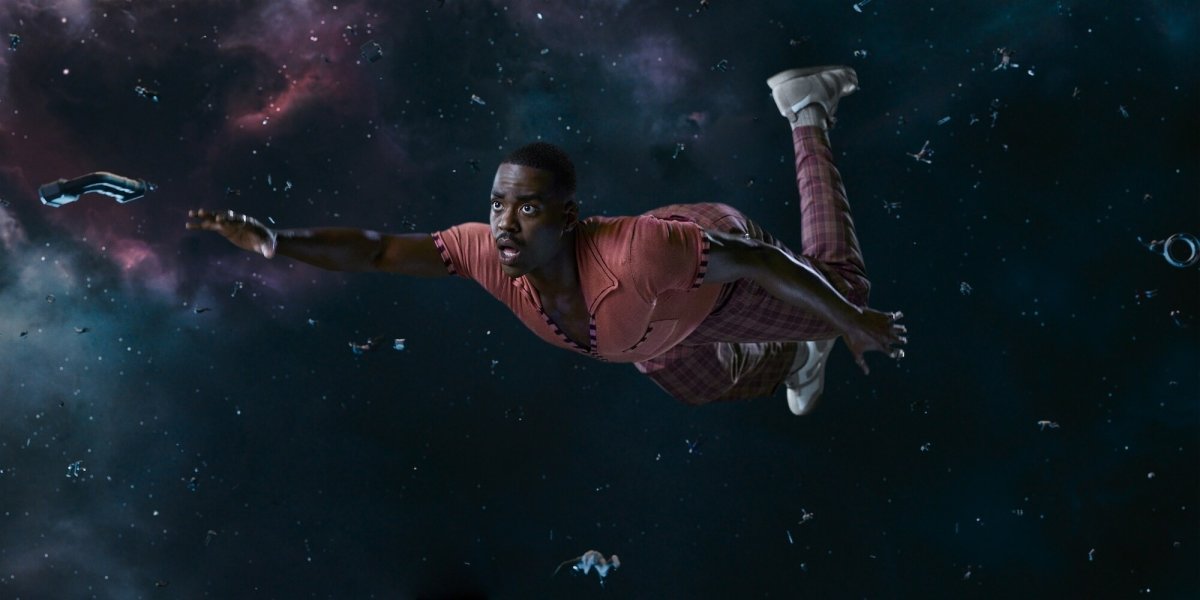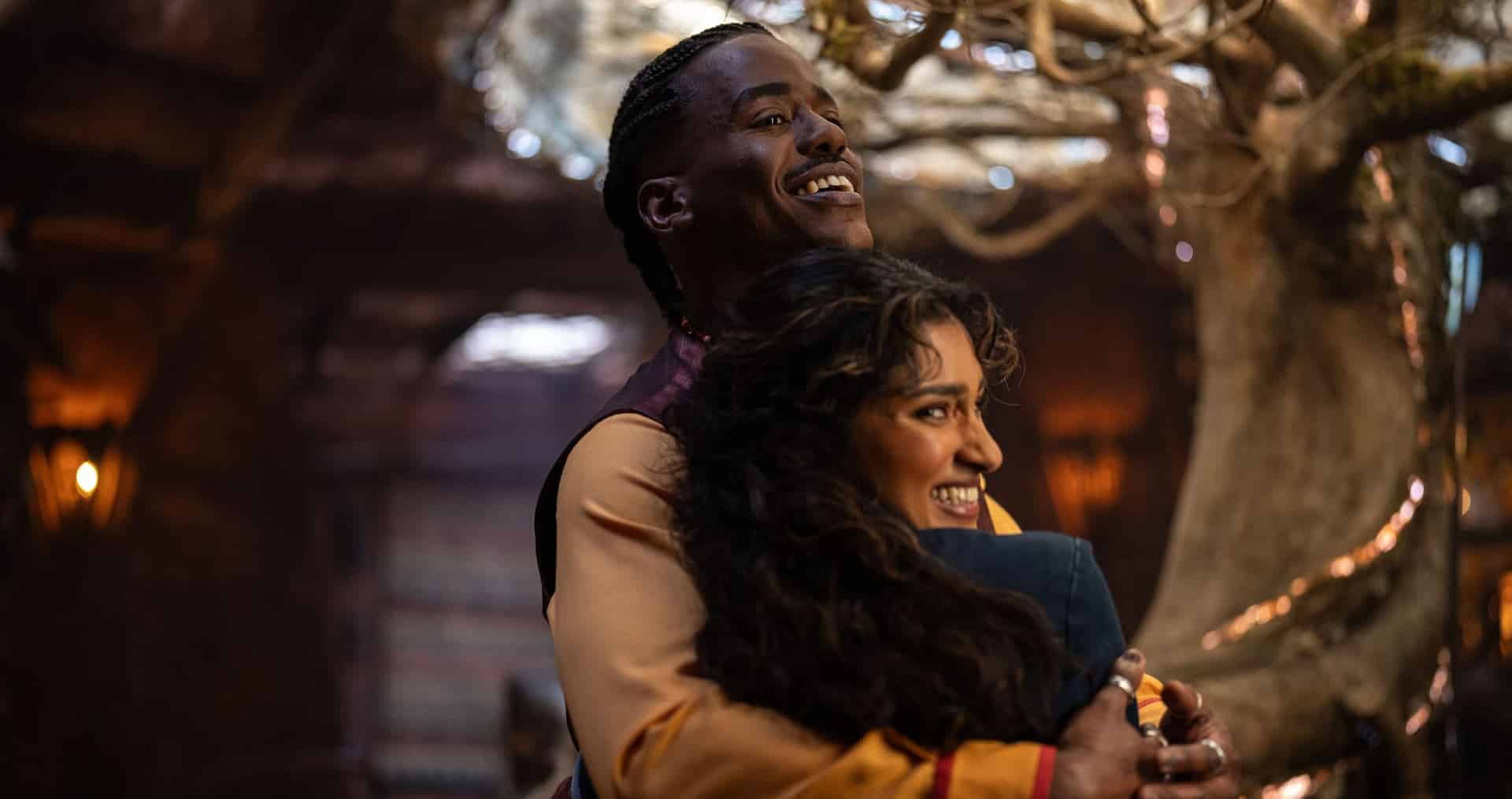CXF Division Field Office #218
Location: [REDACTED], Ohio
Mikey Zee: Well, we’ve picked up some significant anomalous materials from this week’s broadcast. Myself and my partner on today’s mission (and life) Charlie Davis have attempted to identify recurring themes and significant… refractions from established source material. I believe we have compiled a thorough report for you today. Wouldn’t you agree, Charlie?
Charlie Davis: *clicks on tape recorder* Mikey, you and I have been at this for awhile now, and as an expert in the field of liminal spaces and weird goings-on, I have to say that we have absolutely cracked this one wide open. Well, maybe not WIDE open, but we have so many pieces now it almost seems like this case wasn’t a puzzle box all along. Hm. How about that!
MZ: Yes, I agree. So let’s present the pieces of evidence and our observations for this very different episode of WandaVision.
Analysis 1: The Blip

MZ: Okay, breaking our veneer of a gimmick, because… what an incredible cold open???
CD: It certainly was. So much of the MCU and comics in general give us a very focused view of what’s happening to our heroes and maybe a select number of people around them, but kind of leaves everyone else in the world out in the cold. Avengers: Endgame showed us a changed world after “the snap,” AKA The Blip, but the consequences still seemed kind of far away even if the movie took time to show us the personal grief of our heroes.
This episode gives us an extremely close-up look at what it was like for ordinary people when everyone was suddenly brought back. The chaos and horror of people manifesting right where they left off, coming together piece by piece and then attempting to reason out what happened. This entire opening was incredibly well executed and should remind us as viewers that the actions of super-beings have very real consequences on the lives of normal people. In this case, Monica, who has to experience the grief of being told her mother had died in the three years that actually passed while she was unmade. Very horrific and real stuff.
MZ: Absolutely. I also love how this cold open plays with the idea of streaming episodes. We get this very chaotic open that has more in common with E.R. than your typical Marvel film. NewsDay’s review of the original E.R. pilot described it as “all trauma; you never get to know enough about the patients or get involved with them. It’s just treat, release and move on.” And that’s what this feels like. The Blip is all trauma.
CD: And I think aside from showing something we desperately needed to see in order to flesh out the world and Monica’s character, the trauma surrounding The Blip seems like a very real throughline they are setting up to take us through the series. I’ll address it when we get there, but by bringing this piece front and center, I think it’s going to be a lot easier to connect all of Wanda’s dots so to speak. Like Monica, she is also dealing with trauma she may or may not have processed. It was smart to introduce us to this beat in the beginning of the episode. People carry things with them. It shapes them and the decisions they make.
MZ: Trauma shaped Monica, and it shaped her mother Maria. Losing Carol Danvers and gaining her again inexorably and profoundly changed their lives. It caused Maria to found S.W.O.R.D., which is confirmed to stand for Sentient Weapon Observation and Response Division, and seems to be, uh, very drone-focused. And it caused Maria to come up with a protocol in case disappeared people returned, which is also very founded in that trauma of losing Carol, now that I think about it!
CD: Monica wasn’t around to watch S.W.O.R.D change and while we’re on the topic of drones, S.W.O.R.D kind of seemed ill-equipped to deal with anything when Monica isn’t around?
MZ: Yeah, like their whole operations were centered around her as a pilot?? What’s up with that?
CD: Anyway, we finally catch up to the narrative at hand. Not only does Monica meet the FBI agent in charge of a missing persons case that’s not actually S.W.O.R.D business, we also see the moment she gets sucked into Westview which seems to have some very strange consequences. I don’t know about you, but getting changed into someone else’s idealistic version of you… hmm is that House of M flavor I’m tasting? Let me take another taste… subtle notes, but it’s there.
Analysis 2: Boundary

MZ: (Oh, there’s definitely a heaping dash of the House of M comics event this here WandaVision paprikash.)
Westview is a town out of time and, more than likely, out of whole cloth, as it seems that Westview never actually existed before the anomaly appeared?
CD: Right. Or at least that’s what we’re told by the two officers who Agent Jimmy Woo, the official episode MVP, questions. There is an Eastview but no Westview, which is a little strange considering that even outside of the bubble, the sign is pretty clear. It seems Jimmy was sent here on a missing persons case which uh well… sounds a little like another Special Agent that gets sent to a weird town to investigate, in that case, a murder.
MZ: You don’t say!
CZ: Hearing and reading people compare this show to Twin Peaks even before this episode ripped things wide open made me at first arch my eyebrow and then scowl a little. It seems like people were just pulling that phrase kind of out of nowhere. Twin Peaks has always been about more than the strange happenings and the supernatural mystery of the Black Lodge. It just seems like a great many people don’t actually understand that.
MZ: Yes, and—oops, I seem to have tripped, and my whole briefcase of Twin Peaks opinions are falling out…
As I mentioned in this column’s first iteration, the work of David Lynch is more than its “quirky” characters or bizarre imagery. In Twin Peaks, David Lynch used the medium of the primetime soap to both tell a story and also comment on TV itself; others have written about this too. In Lynch’s mind, Twin Peaks is what soap operas are, just during primetime.
If the original was one of the first examples of prestige TV, Twin Peaks: The Return is a reflection of how TV genres grew and proliferated in the intervening 25 years. So The Return became the exact maximalist thing that prestige TV became. Sometimes it’s a sitcom-esque comedy, other times a crime serial, and still others a serious character drama. David Foster Wallace originally coined the term Lynchian to describe when “the very macabre and the very mundane combine in such a way as to reveal the former’s perpetual containment within the latter.” Lynchian TV is TV, just… turned up, to highlight points both of the medium and daily life.
In contrast, WandaVision… is a sitcom as Wanda Maximoff sees them, combining the absurd with the mundane to provide a humorous reflection of everyday life. Nothing challenges the characters here past what they can fix in a 30 minute episode, and everything ends up okay.
CD: We’re treated to some very focused narratives as the threads become less about upholding the genre of Sitcom so worshipfully as the first three episodes did and become more about what people are seeing on the outside. We were watching before and now we’re kind of watching other people watch? Because of that we get to see not only how Agent Woo is looking at this, but Darcy, Kat Denning’s character from the Thor films. Not only does she bring some more levity in, but we see a very distinct split in sides here. Agent Woo and Darcy who are plugging away at a mystery, but who ultimately have empathy for Wanda, who they perceive to be trapped… and S.W.O.R.D, who’s handling everything much more clinically.
Analysis 3: Team

MZ: You know, I always thought Darcy was one of the best parts of that original Thor film. And Agent Woo is just an absolute delight. We kind of needed these… characters with a sense of humor? Especially as characters that are meta-narratively looking at the show itself.
CD: They are really just seeing what we were seeing, the life Wanda has cooked up inside of Westview. We see some attempts to contact Wanda, which don’t exactly fail, but whenever something interrupts the show it’s almost copy-pasted over. We don’t see Dottie ask Wanda who she is or cut her hand in the broadcast Darcy is watching and we don’t see what happens to the ill-fated S.W.O.R.D agent that was warped into a bee keeper? What an AWFUL idea to send a human person in there. It’s almost like… they wanted to see what would happen.
MZ: Yeah, so remember when I referenced Annihilation in the last article? Turns out I was more on the money than I even realized… sending people into the heart of an anomaly just to see how they’re changed and altered by it is kind of the central conceit there. Though here, it’s less about the people who enter the anomaly as people, and more as objects.
My thought here is, the anomaly that’s been created just tries to take anything in there and make it something that’s appropriate to the time period and genre. So this S.W.O.R.D. agent in a cleansuit becomes a bee keeper… and I think Wanda does have trauma related to someone with a similar look, for her to have reacted in such a way.

CD: I absolutely think there is residual Hydra bullshit going on, and those commercials we are seeing? I think they are the subconscious broadcast of Wanda’s fears. They are sandwiched in between what makes Wanda feel safe and secure, these old sitcoms. Elizabeth Olsen spoke in an interview about how American Sitcoms have a special place in Wanda’s heart as she used to watch them back in Sokovia when she was growing up. They represent family and safety. While there is almost certainly a bigger villain at play, knowing that Wanda is the one doing this and making these choices… did a lot to assuage my fears about her mental state.
MZ: Speaking of that… let’s talk about how, exactly, we know that this is coming from Wanda’s mind.
Analysis 4: Broadcast

CD: The horror tells us! No really, the narrative breaks again, and we are finally seeing what happened between Geraldine (Monica) and Wanda in the closing moments of the last episode.
Upon remembering Ultron and facts about Wanda’s life, Monica begins to come back to herself only to be confronted by Wanda, which pulls the rug out from under this whole scenario. Wanda figures out Monica is an intruder (which tells me there is more at play here as she did not automatically know) and tosses her through the wall and thusly out of the bubble.
MZ: It’s worth noting here… Wanda definitely did not have magic powers previously in the MCU. But she sure looks like does here, as she makes the an entire house’s worth of walls neatly knit themselves back together.
CD: We then see Wanda in panic mode as she looks at the destruction she caused. Then things get REALLY interesting. Wanda tidies up the mess, stitches the house back together, and when Vision enters… well. YIKES.
MZ: First we see Vision as we saw him before… and then we see a glitch in Wanda’s reality, and well.
Vision sure is dead.
I can’t help but draw a visual comparison to when Laura Palmer’s mother pulls her ‘mask’ off in The Return, as shown below. The veneer is removed, showing the dead, colorless nightmare that we feared was there, but hoped wasn’t.

So. Is this really Vision’s body? And if so, how did Wanda get it? I do have some thoughts…
CD: Now that you mention it, Jersey does have some implications now that we are peeling back that layer. I don’t think it’s just a coincidence that the show is based there.
MZ: No, I don’t either. So, I talked some last week about how this storyline was originally tackled in the comics. What I didn’t mention is that in that version, when Wanda and Vision decided to start a family, they moved away from the hustle and bustle of New York to the suburbs of New Jersey (Cresskill, to be exact). Unfortunately, in the comics the twins Wanda has are actually just two wayward souls she (unconsciously) stole from the depths of Hell. Doctor Strange and the rest of the Avengers end up sorting things out, and Wanda loses her memory of the family she created through arcane and awful means.
And it’s that New Jersey home Wanda returns to after she eventually remembers that she had children and–again, speaking purely about the comics here–has a mental break in Avengers Disassembled and melts her former husband, Vision.
There’s a lot of messy continuity there, but there’s one outcome of all that I thought worth mentioning. After the Avengers are no more and the Avengers HQ is just a crumbling ruin covered in ivy, one teenager goes to retrieve the remains of Vision from a Stark Industries secure warehouse.

We know because of Spider-Man: Homecoming that Tony Stark and the U.S. government had a partnership to clean up salvage from superheroic conflicts, and Vision is a very powerful creation based largely on his technology. So I think it stands to reason that Tony would’ve gone to reclaim Vision… but I also think it stands to reason that Wanda would have the ability to take him back, much like young Nate Richards did in the comics. I do think that really is Vision’s corpse, as grotesque an idea as that might be.
CD: Woof. I think we’re honestly seeing an interesting break in comics continuity, which makes me happy considering everything you just said.
Well Mikey. I think that finishes up my report. You have anything you wanna add?
MZ: Only that I can’t wait until next time! This is Special Correspondent Mikey Zee of the CXF WandaVision Task Force, signing off.







